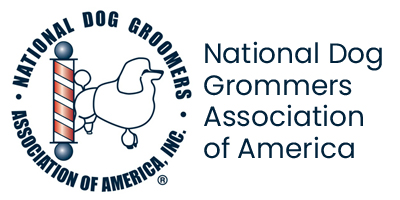Handstripping is a grooming technique that is used on wirecoated breeds like schnauzers, terriers, and the wirehaired dachshund. Hardcoated- (or wirecoated- ) breeds have coarse hair that grows in lifecycles. Once each hairstrand has reached its max length, it dies and eventually falls out. The dead hairs are gently pulled out by hand, so that a pretty new coat can come forth.
Handstripping is very labour-intensive, time consuming and hard on the groomers arms and hands. But the payoffs are significant:
It depends on your dog. Some dogs will maintain their wiery coat for years, despite being clippered. Other dogs will fade and lose all structure after one or two clipperings. Set up an appointment to talk to our professional groomer about your dog, once we see the dog we will recommend further action to make your pet look it's best!
The adult fleas you see on your pet represent approximately 5% of the total flea population, and are only the tip of the infestation iceberg.
Fleas are not just a nuisance, they can actually affect your pets overall health. Fleas live on your pet and survive off of their blood. Besides your dog being absolutely miserable because of fleas, they can also cause parasites such as tapeworms.
The stages that take place leading to adult biting fleas begins with the eggs = 10 days -----> larvae = 12 days ----> pupae = 4-5 months ----> adult flea.
Did you know that the lifespan of a flea is 50 days? The fleas don’t always just stay on your dog, they also will live in your carpet, get on any other pets in the house, and in your car and lay eggs and multiply. You are lucky if they don’t feed off of you too. One flea is able to multiply to tens of thousands. Once your home is infested, it takes time and effort to get rid of all of them.
Although fleas are more common of a problem during the summer, they will also live in your home in the colder seasons because of their continual cycle of life.
We highly recommend treating the problem before it starts. Frontline Plusis an excellent treatment for fleas ( and ticks ). Once you put it on your dog, it will within 12 hours kill 100% of the fleas living on your pet, break the cycle of the eggs leading to fleas, and give them continuous protection for a month.
It is recommended to put on your calender a reminder to apply it every month. You can purchase Frontline from your vet, most pet supply stores and on line.
More about fleas If your home is already infested with fleas, it is recommended that along with treating your dog with Frontline that you also vacuum all around your home frequently, clean your dog’s bedding in hot water, and keep the area outside your home where your dog spends time clear of leaves and tall grass.
There are a few different things you can do to check your dog for fleas. The obvious You will simply witness them scratching and chewing themselves. You can then further look for them by using a flea comb. You will either find fleas or flea dirt. Flea dirt is red or rust colored.
Some breeds of dogs need to be groomed more often than others. Longer and/or thicker coated breeds like Poodles, Maltese, Shih-tzu’s and Schnauzers require more upkeep. These breeds should be groomed every 4-6 weeks, otherwise these coats can get out of control.
Breeds like Huskies and Golden Retrievers with thick undercoats should get groomed every 8-10 weeks.
Upon arrival we will evaluate the severeness of the matting and discuss with the owner how to proceed. If the matting is salvageable and the owner is willing to pay for the extra time spent to avoid a shave down, we will do everything within reason to make a matted dog look fabulous.
However there are some issues that go along with de-matting a dog:
Proper and regular brushing combined with a good grooming schedule eliminates this problem.
Brushing your dog on a regular basis is important for your dogs health and well-beeing. Some coats need to be brushed daily, others will do with once a week. Even a short haired breed will benefit from a good de-shedding treatment to loosen old and dead hair and stimulate blood circulation.
Keeping a full coat on a Shih-tzu, Lhasa Apso, or Poodle is quite an ambitious task. If you know you cannot keep up with a daily brushing routine, you should consider having their coat kept short in combination with a monthly visit to the groomer. Long, fine, or curly hair get matted very easily, and the areas that mats up first are behind the ears, the insides of their legs, the collar area (if the dog wears a collar on a regular basis), and tails. When brushing your dog those are the areas you need to work out first - just brushing down their back does not count!
Fine coated breeds often have thin skin, so brush gently to prevent irritation. Thicker coated breeds require stronger brush strokes and strong equipment to get through the undercoat. Axcium Dog Spa will be happy to help you get the proper grooming tools for your particular dog.
A clean dog is a healthier dog. Cleanliness is directly tied to your dog's health. If you use proper quality dog products you cannot bathe your dog too often. If your pooch smells or gets dirty, give a bath! They may not look exactly like they do coming home from the groomer, but at least they smell good. Bathing also helps an itchy or scratching dog.
Keep in mind when you bathe your own dog:
We will brush your dog's teeth upon request for a small additional fee.
We remove as much of the loose hair as possible, using special deshedding tools and force-dryers.
Getting rid of all that dead hair helps bring out your dogs shiny healthy coat, and reduces the amount of hair your dog sheds at home. A de-shedding treatment can reduce the amount of fur your dog sheds by up to 90% for 4 weeks+. All the hair we collect, is hair you won’t have all over your home.
De-shedding treatments are available for all breeds, they are great for breeds like labs and retrievers and all breeds with dense undercoats like Huskies, German Shepherds and Collies.
When we force blow dry your dog, the air pressure separates the hair so we can see right to the skin. This allows us to spot fleas and ticks that otherwise would be hard to find, especially on a very hairy dog.
We make sure that when removing the tick, we remove it properly. If we find fleas we administer flea baths, and inform the client on how to get on a good flea preventative.
Make sure you found a tick and not a mole. You will be able to differentiate by seeing if it has legs. Do not try to remove it with your fingers! Ticks carry Lyme disease, which is a serious disease. There are tools that are specifically made for removing ticks, however you can use a fine tip tweezer. Be very careful not to squash the tick or remove by twisting it. Grasp the tick by its head with the tweezers and pull slowly away from the skin firmly with an upward and outward movement. Make sure not to leave any parts still embedded to their skin. Dispose of the tick properly by putting it in some rubbing alcohol.
There are good flea and tick preventatives on the market, see our page on fleas for more details.
If your dog has fleas, we will give them a flea bath (or dip). To effectively kill all the fleas living on your dog, we let the shampoo sit for 10 minutes, then rinse and repeat.
Giving your dog a flea bath is only a temporary fix. To learn more about fleas and how to get completely rid of them see our page on fleas.
We work with numerous dogs that were considered problematic by previous groomers.
You can stay and observe while your dog is being groomed, but we ask that you request this when booking your appointment.
Keep in mind that most dogs are better behaved when their owners are not present.




